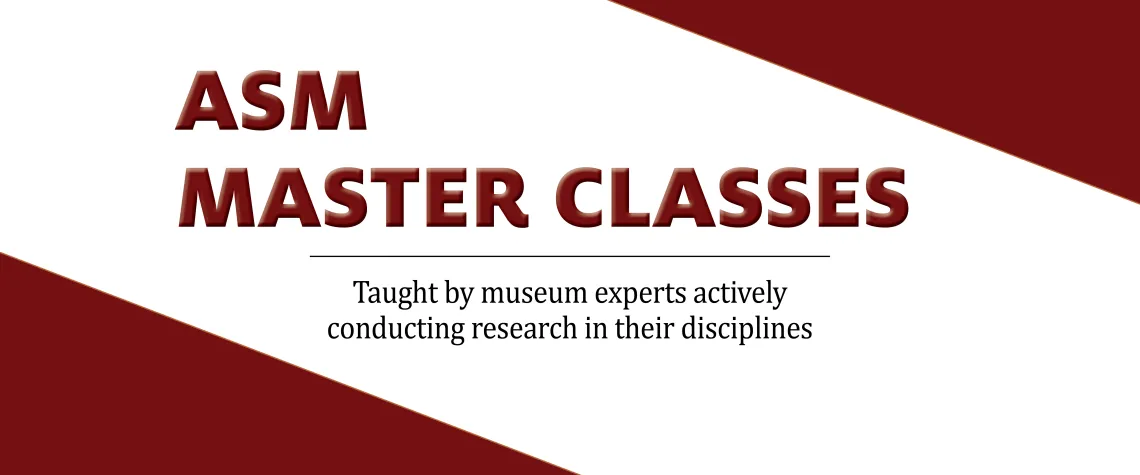
Learn new things or advance your level of knowledge!
These recorded Master Classes are deep dives into specific subjects, given in installments.
For questions or to register by phone, contact:
Darlene Lizarraga
Director of Marketing
520-626-8381
dfl@arizona.edu
Register by mail by sending in a check, payable to "UA Foundation/ASM" and with the name of the master class in the memo line, to:
Darlene Lizarraga
Arizona State Museum
PO BOX 210026
Tucson, AZ 85721-0026
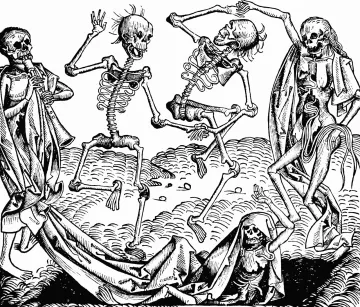
DISEASES IN HUMAN EVOLUTION
taught by James T. Watson, Ph.D. Curator of Bioarchaeology and Professor of Anthropology
This ASM Master Class examines human bio-cultural adaptations to pathogens, including the origin, evolution, distribution, and diversity of diseases and the human groups they affect. We will examine a variety of topics including viral, bacterial, parasitic, and nutritional diseases, as well as maladaptive cultural practices. Dr. Watson will explore the evidence for how diseases impacted human groups in the past and how they continue to evolve and impact humans today.
Session 1: Introduction to diseases and biocultural evolution
What is disease (and other important vocabulary)
The human immune system
Paleopathology and paleogenomics
Epidemiological transitions
Session 2: Viral Diseases
Smallpox
HIV
Kuru
“Flus”
Session 3: Bacterial Diseases
Tuberculosis
Bubonic Plague
Leprosy
Treponema
Session 4: Parasitic, Nutritional, & Metabolic Diseases
Malaria
Chagas
Metabolic Disease
Session 5: Diseases of the Modern World & Cultural Disorders
Neoplasms
Arthritis
Cultural Disorders
------------
$80 for ASM members or $130 for non members
Payment in excess of $50.00 qualifies as a tax-deductible donation
Proceeds support the instructor's ongoing research
One-month access to a Google Drive folder
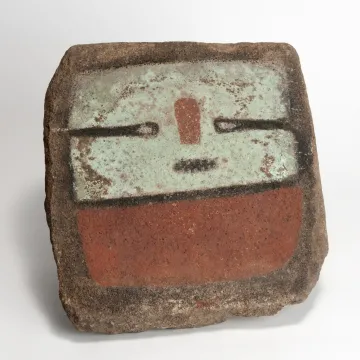
Painted stone slab bearing katsina imagery from Point of Pines. Photo (ASM Catalog No. A-5303) by Jannelle Weakly
THE ARCHAEOLOGY OF THE POINT OF PINES REGION
taught by Patrick D. Lyons, Ph.D, RPA, ASM director, curator, and professor of anthropology
The Point of Pines region of east-central Arizona (on the San Carlos Indian Reservation, east of Globe) looms large in syntheses of the archaeology of the US Southwest. It was investigated by Dr. Emil W. Haury, ASM's second Director (1938-1964), who oversaw an archaeological field school based there from 1946 to 1965, following a survey of the area in 1945. At Point of Pines, Haury and his students refined the newly defined Mogollon archaeological culture. They also found robust and compelling evidence of an ancient influx of immigrants from the Kayenta region of far northeastern Arizona and southeastern Utah. Since 2012, Dr. Lyons has been studying the collections from Point of Pines Pueblo and their associated records in order to shed new light on the immigrant occupation. In this six-session Master Class, Dr. Lyons will tell the story of the Point of Pines field school, placing the results of Haury and his students' work, more than 60 years ago, in the context of what archaeologists know today.
Session 1: An Introduction to the Point of Pines Archaeological Field School
This overview of the 1945-1960 archaeological investigations in the Point of Pines region will serve to orient students to the local geography, introduce key archaeological concepts, and provide students with an understanding of the local phase chronology. Special foci will include Emil Haury and the Mogollon archaeological culture.
Session 2: The Mogollon Archaeological Culture and the Record at Point of Pines
This session focuses on the importance of the work at Point of Pines in supporting the validity of and refining the Mogollon concept. Key topics to be addressed include the controversy associated with Haury's definition of a Mogollon archaeological culture, the ways in which the fieldwork at Point of Pines built upon Haury's earlier work (particularly at Forestdale, in the context of a previous ASM/UA field school), and Joe Ben Wheat's magnum opus that synthesized Mogollon archaeology based on insights derived from his work at Point of Pines.
Session 3: Haury's Inferences About Kayenta Immigrants at Point of Pines Pueblo
In 1958, Emil Haury published a paper about Point of Pines Pueblo that has become the US Southwest's classic case study in how to reliably infer ancient migrations. This session will recount Haury's conclusions, including his inference that deadly conflict erupted between members of the local population at Point of Pines and the immigrants from the Kayenta region, as well as the process by which he came to them.
Session 4: The Kayenta Presence at Point of Pines Revisited
Newly compiled data, to be featured in a book now being written, lend strong support to many of Haury's conclusions of more than 60 years ago and cast doubt on others. A key focus of discussion will be the burning of a portion of Point of Pines Pueblo, previously interpreted as evidence of prehispanic violence and now understood as an act of ritual decommissioning.
Session 5: The Kayenta Diaspora and the Salado Phenomenon
The purpose of this session is to place the immigrant occupation at Point of Pines within the larger context of the diaspora from the Kayenta region. Key foci will include comparisons of the archaeology of Point of Pines with data from the San Pedro Valley, the Safford Basin, and other areas with robust evidence of Kayenta immigrants, and links between northern immigrants and the origin and spread of Roosevelt Red Ware (Salado polychrome pottery).
Session 6: The Point of Pines Phase
This session addresses the final prehispanic interval in the Point of Pines region's phase sequence, ending sometime between A.D. 1400 and 1450. The discussion will emphasize the proper chronological placement of the phase and tantalizing clues suggesting connections between these latest prehispanic occupants of the Arizona mountains and the Zuni of west-central New Mexico.
------------
$80 for ASM members or $130 non members
Contact the ASM Marketing Office to purchase this Master Class: 520-626-8381 or dfl@arizona.edu
Amount paid over $50 is a tax-deductible donation
Proceeds support the instructor's ongoing research
One-month access to a Google Drive folder
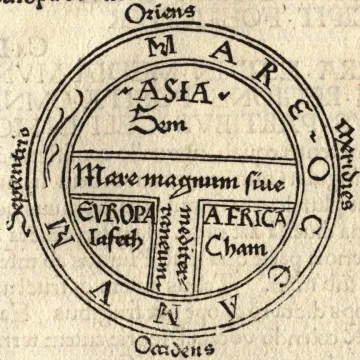
FINDING THE WHOLE IN OUR PAST: EPISODES IN MODERN WORLD HISTORY
taught by Dr. Michael M. Brescia, curator of ethnohistory and affiliated professor of history and law
Legendary filmmaker and humorist Mel Brooks parodied western civilization and Hollywood efforts to glorify ‘the West’ in the now classic movie, History of the World, Part I. This four-part series will differ from the more traditional ‘western civ’ approach to understanding the past and instead take the entire globe as its field of historical study. Dr. Brescia will examine the history of the modern world since 1500 via the premise that political, economic, and cultural interconnections and dependencies among peoples of the world—nowadays called “globalization”—have deep roots in the past. Societies and cultures around the world unfolded neither in isolation nor in a vacuum but rather as a consequence of their relationships with neighboring and sometimes distant peoples. To make sense of the world in which we live today we will cultivate our historical imaginations to critically view the globe and its peoples as a whole rather than as discrete and exceptional units devoid of contact and exchange. Broad coverage of the modern world includes the origins of global interdependence (1450-1800); the age of revolution, industry, and empire (1750-1914); and the so-called ‘short twentieth century.’
Session 1: Introduction and Patterns of Cross-cultural Contact and Exchange
Session 2: Print Revolution, Religious Change, and Europe's Transition to Modernity
Session 3: Cross-cultural Transitions and the Leap to Enlightenment
Session 4: Industrialization and its Global Impact on the 19th and 20th Centuries
------------
$80 for ASM members or $130 for non members
Payment in excess of $50.00 qualifies as a tax-deductible donation
Proceeds support the instructor's ongoing research
One-month access to a Google Drive folder
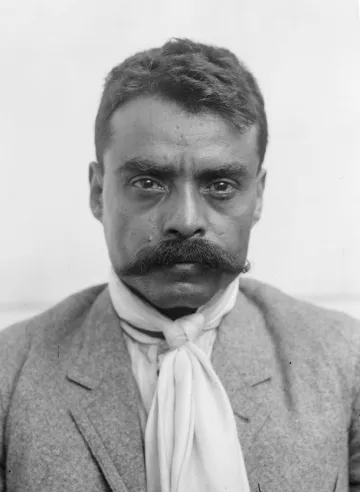
Emiliano Zapata, 1914. Public domain.
MAKING (HISTORICAL) SENSE OF MEXICO
taught by Dr. Michael M. Brescia, curator of ethnohistory and affiliated professor of history and law
(This class is a Part-One companion to Putting Mexico and Modernity on the Historical Couch: Revolution to COVID-19)
The headlines scream that Mexico in the new millennium has become a lawless state riddled with political corruption, drug violence, and extreme inequality, which push its citizens to seek economic security across the international border in the United States. In this four-part series, Dr. Brescia will take you beyond the media headlines and political soundbites and introduce you to our southern neighbor by examining the manner in which history, geography, and culture have shaped modern Mexico since its independence from Spain in 1821. You will learn about the tumultuous nineteenth century when Mexico experienced four foreign invasions and routine civil discord, the violent upheaval of the world’s first social revolution in the twentieth century, and the challenges and opportunities associated with sharing a nearly 2000-mile border with the so-called Colossus of the North, the United States.
Session 1: Introduction and Colonial Legacies
Session 2: Culture as Explanation and the Wars for Mexican Independence
Session 3: The Elusive Search for Stability in Nineteenth-Century Mexico
Session 4: The Cost of Modernity and Revolution in Late Nineteenth and Early Twentieth-Century Mexico
------------
$80 for ASM members or $130 for non members
Payment in excess of $50.00 qualifies as a tax-deductible donation
Proceeds support the instructor's ongoing research
One-month access to a Google Drive folder
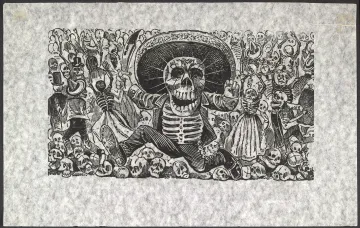
“Calavera Oaxaqueña,” by José Guadalupe Posada (Mexican lithographer, 1852-1913)
Putting Mexico and Modernity on the Historical Couch: From Revolution to COVID-19
a five-part class taught by Michael M. Brescia, Ph.D., Curator of Ethnohistory and Affiliated Professor of History and Law
(This class is a Part-Two companion to Making (Historical) Sense of Mexico)
With certain parts of Mexico under the violent grip of the drug cartels, not to mention the Mexican government’s erratic response to the coronavirus, it comes as no surprise that many Mexico watchers have started to label the country a “failed state,” or at least a profoundly dysfunctional one. Policy analysts and journalists scramble to uncover and interpret the so-called “Mexican psyche,” but often they do so through a lens tinted not by historical perspective but rather by immediate political or material concerns. ASM historian Michael Brescia will establish and assess the larger historical context of modern Mexican history, from the aftermath of the Mexican Revolution—the world’s first social revolution of the twentieth century—to the reemergence of populism in the early 2000s in the face of globalization and the increasing socio-economic inequality that has accompanied it. He will explore such themes as stability and uneasy transitions within Mexican political structures, the vagaries of the global economy and its effects on Mexican society, culture, and identity, as well as the multiple dynamics that have fashioned U.S.-Mexico relations since World War II. This Master Class is a sequel of sorts to the very first Master Class that Dr. Brescia developed and taught for ASM in 2018, which examined Mexican history from the late colonial period to the Mexican Revolution of 1910-1920.
- Session 1 – Introduction and Post-Revolutionary Realignments. In the first session of his Master Class, Dr. Brescia will identify and develop the conceptual framework that will inform our understanding of Mexico in the modern world, as revolutionary ideology made plenty of room for the promises of globalization and closer ties to the United States.
- Session 2 – Politics and (Dis)Continuity under the One-Party State. Despite the establishment of the PRI as the dominant political party in Mexico in the wake of the Mexican Revolution, tensions emerged in the bureaucratic polity that governed Mexico from the late 1920s to 2000. Dr. Brescia will evaluate the various political personalities and their policies that sought to industrialize Mexico while navigating the social needs and material demands of a growing population.
- Session 3 – The Persistence of Change in Mexican Culture and Identity. Dr. Brescia explores both the formal and popular dimensions of Mexican culture in a post-revolutionary and increasingly urbanized society seeking material progress in tandem with social justice and greater political participation. We will study the various ways in which modernity has had an impact of Mexican film, art, literature, and “identity politics.”
- Session 4 – Mexamerica and the Blurring of International Borders. Migration of peoples has characterized North America for millennia. The establishment of human-made political borders to control, in part, the movement of peoples, goods, and ideas, however, took off and hardened with the rise of the nation-state in the eighteenth and nineteenth centuries. In the fourth session of our Master Class, Dr. Brescia seeks to identify and explain the multiple features of the U.S.-Mexico Borderlands and the cultural hybridity that has emerged since the late twentieth century.
- Session 5 – Promise and Chaos in Early Twenty-First Century Mexico. The election of Vicente Fox to the presidency in 2000 put an apparent end to one-party rule and electoral corruption. Global crises outside of Mexico’s control, however, such as the terrorist attacks of 9/11 and the Great Recession, has made the path to democratization rocky and uncertain. In this final session, Dr. Brescia provides a critical appraisal of Mexico and U.S.-Mexico relations in light of several phenomena, including immigration, drug violence, political populism, and COVID-19.
-----------
$80 ASM members $130 non members
Amount paid over $50 is a tax-deductible gift
Proceeds support the instructor's ongoing research
One month access to a Google Drive folder
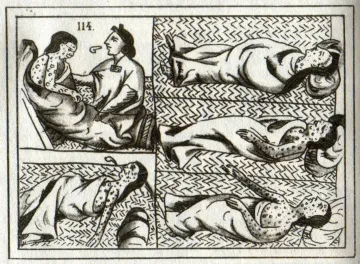
A PESTILENCE SO GREAT AND UNIVERSAL: DISEASE AND THE STRUCTURES OF EARLY MEXICAN HISTORY
taught by Dr. Michael M. Brescia, curator of ethnohistory and affiliated professor of history and law
Amid the lethal toll of Covid-19 and the accompanying global economic downturn, historians are revisiting the role of diseases in world history and their larger impact on culture and society. Even a cursory glance at Mexican history tells us that Mexico is no stranger to the debilitating effects of disease on individuals, families, and communities, not to mention an epidemic's capability to transform the political, economic, and social institutions that fashioned daily life in the deep past. In search of clues to help us better grasp what has been unfolding around us today, ASM historian Michael Brescia will examine the multiple ways in which diseases defined the broader contours of early Mexican history, from Pre-Columbian times to Spanish conquest and colonization.
Session 1: From Cocoliztli to the Coronavirus: Toward an Understanding of Disease in Mexican History
Dr. Brescia establishes the Master Class's conceptual framework and identifies the challenges that historians face when they interrogate the evidence of historical diseases
Session 2: Written with Soft Chalk: Disease and Population Patterns in Pre-Columbian Mexico
This session examines the interdisciplinary scope of research into Mexican antiquity and discusses the varieties of the Mesoamerican experience before the arrival of the Spanish in the sixteenth century
Session 3: A Disease of the Heart: The Spanish Conquest of Mexico
Dr. Brescia evaluates Old World diseases as a crucial factor in Hernán Cortés's conquest of Moctezuma's Aztec confederation
Session 4: Remote Beyond Compare: The Long Haul of Colonial Epidemics
Participants learn about the regional dimensions of disease in colonial Mexico, from the arid stretches of its far northern frontier to the humid zones located in the southern reaches
Session 5: Quarantines, Vaccines, and How to Have a Good Death in Late Colonial Mexico
Dr. Brescia explores the last decades of Spanish colonialism at the intersection of medicine and religiosity
------------
$80 for ASM members or $130 for non members
Payment in excess of $50.00 qualifies as a tax-deductible donation
Proceeds support the instructor's ongoing research
One-month access to a Google Drive folder
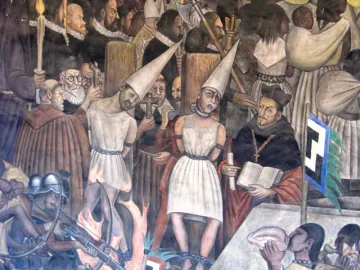
(Nobody Expects) THE SPANISH INQUISITION: OLD & NEW WORLD VARIETIES
taught by Dr. Michael M. Brescia, curator of ethnohistory and affiliated professor of history and law
Even a cursory glance at modern popular culture reveals the degree to which the Spanish Inquisition continues to shape our historical imaginations. As we laugh at the antics of Monty Python or Mel Brooks, we see the same images: men in red robes preparing the instruments of torture and fanning the flames of the pyre. This Master Class subjects the Inquisition, as both a European and New World institution, to rigorous examination. We will explore the laws, procedures, and practices that fashioned the Inquisition into a religious, political, and cultural instrument of power that was wielded by the Church but often in support of an expansive State, from its origins in medieval Europe to its transfer to the Spanish colonies to its eventual demise in the early nineteenth century. We also will assess a series of case studies in order to identify what brought people before the Inquisition, including, for example, accusations of conducting Jewish and Muslim practices, idolatry, blasphemy, crimes against the Catholic sacraments, witchcraft and sorcery, as well as the illicit use of flora, fauna, and human matter, and, finally, publishing books and treatises that promoted heresy or political sedition.
Session 1: Introduction – The Inquisition in History and Popular Culture
Our first session introduces the major themes of the Master Class and establishes the conceptual framework for better understanding the Inquisition, trying to separate fact from fiction, history from myth. Issues of historical and cultural relativism will be examined, as well as the broader political concept of ‘inquisition’ and its evolution in modern world history (for example, Senator Joe McCarthy’s hunt for communists in the early Cold War). Finally, we will explore the Spanish Inquisition in popular culture and ask why we might find humor in its procedures.
Session 2: The Inquisition in Europe – Medieval and Spanish Iterations
We will assess the origins of the Holy Office of the Inquisition in medieval Europe, particularly in light of the so-called heretical movements that emerged in southern France and northern Italy but also as part of institutional efforts to curb ‘mob justice.’ We will focus on the Spanish Inquisition and its links to the union of the Crowns of Castile and Aragón under Isabella and Ferdinand. Spanish attitudes toward the Jewish and Muslim populations in Spain will be part of the discussion, as will conversos (Jews who had converted to Catholicism) and moriscos (Muslims who had converted to Catholicism).
Session 3: The Inquisition Comes to Colonial Mexico
Despite the lack of Jews, Muslims, and Protestants in Spain’s most prized New World colony, the Inquisition was established in New Spain in 1571, although an inquisition run by the bishops of Mexico City and Yucatán had functioned there since the mid-1530s. We will examine the procedures that defined each step in the inquisitorial process, the legal parameters of using torture, and the grand public spectacles that followed Inquisition trials—what were known as autos-de-fé.
Session 4: Inquisition Case Studies, Part I – Blasphemy, Crimes against Marriage, and Jewish, Muslim, and Protestant Practices
Employing case studies found in Mexican, Spanish, and U.S. archives and rare book libraries, we will evaluate the different accusations that neighbors leveled against neighbors, family members against other family members, and friends and lovers lodged against each other. These case studies will show us the complex web of social and political relationships that developed in colonial Mexico, where an ever-growing racially-mixed population used the Inquisition to forge local autonomy and wield cultural power. Efforts will be made to employ case studies from throughout the colony.
Session 5: Inquisition Case Studies, Part II – Witchcraft, Sorcery, Superstition, and Print Culture
Our final session will utilize case studies that reveal other intimate dimensions of the accusations that landed people before the Inquisition, such as the use of love potions, local plants and animals, and bodily fluids to cast spells over potential lovers and enemies, both real and imagined. We also will examine change and continuity in the Mexican Inquisition caseload during the transition to Bourbon rule in the eighteenth century, as the new dynasty moved to reassert royal power in the Age of Enlightenment. Finally, we will assess the manner in which the Inquisition exercised censorship of religious and political tracts, as well as printed expressions of popular culture. The Master Class concludes by looking at the Inquisition’s role during the wars for independence from Spain (1810-1821).
------------
$80 for ASM members or $130 for non members
Payment in excess of $50.00 qualifies as a tax-deductible donation
Proceeds support the instructor's ongoing research
One-month access to a Google Drive folder
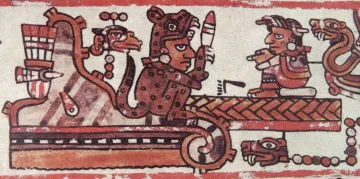
a page from Codex Bodley
UNDERSTANDING INDIGENOUS MEXICO THROUGH THE CODICES
taught by Dr. Michael M. Brescia, curator of ethnohistory and affiliated professor of history and law
The Western world associates manuscript culture with prayerful (and playful) monks writing away in medieval monasteries to preserve knowledge, while Johannes Gutenberg ushered in modernity with his invention of a mechanical metal moveable-type press. Once we leave the confines of western civilization, however, we find striking examples of writing and literacy that reveal the deep and complex historical structures of non-western cultures. This five-part ASM Master Class examines the manuscript culture of ancient Mexico and what the codices tell us (and don't tell us) about the political, economic, social, and cultural rhythms of daily life for the Maya, Mixtec, and Aztec societies. Made of deer hide, agave fibers, or bark paper, the pre-Columbian codex folded like an accordion and could contain images on both sides. After the Spanish conquest of Mexico in 1521, the codex tradition continued under the auspices of the Spanish missionaries and provided Indigenous peoples with a voice amid the dramatic changes that were taking place all around them. Now looking more like a European-style book, the colonial codex allowed the Indigenous elite to revisit and reimagine their histories prior to the arrival of the conquistadors and the imposition of Spanish colonialism. Adjusting to new realities, Indigenous peoples became active players in the preservation and revitalization of their lifeways, as they took advantage of new techniques in manuscript development to manifest their voices.
Session 1 - Introduction to Pre-Columbian and Colonial Writing Systems in Mexico. Dr. Brescia establishes the nature and scope of the codex as a physical object of significant historical and cultural import for understanding the rhythms of daily life in pre-Columbian Mesoamerica, followed by the cataclysmic changes brought to bear on Indigenous society by the Spanish conquest and revealed in the emerging colonial codex.
Session 2 - Maya Codices. In the second session of our Master Class, Dr. Brescia will examine and tease out the multiple dimensions of pre-Columbian Maya society as manifested in the Dresden Codex, Madrid Codex, Paris Codex, and the Grolier Codex, the latter having only been authenticated by scholars in 2018. He will discuss the links between the Maya codices and scholarly efforts to crack the so-called Maya code or hieroglyphic system of writing.
Session 3 - Mixtec Codices. Dr. Brescia reveals the rich dynastic and cultural history of the Mixtec peoples of Oaxaca and their dynastic genealogies and conquests, as well as the political alliances that they forged in the highlands of Oaxaca before the arrival of the Spanish in the sixteenth century. Participants will delight in the striking colors and imagery of such Mixtec codices as the Nuttal Codex, Bodley Codex, and the Vienna Codex, among others.
Sessions 4 and 5 - Aztec Codices. In the final two sessions of our Master Class, Dr. Brescia explores changes and continuities in Aztec society through a close examination of several codices and writings produced just before and right after the Spanish conquest of the Aztec confederation in 1521, including, for example, the Codex Mendoza, Codex Florentine, Codex Duran, Codex Borgia, and the Codex Chimalpahin. Participants will distinguish between pre-Columbian Aztec writing and the codices assembled under the auspices of the Spanish missionaries. The Master Class will conclude with an assessment of the codex as a crucial component of Mexico's historical patrimony.
-----------
$80 for ASM members or $130 for non members
Payment in excess of $50.00 qualifies as a tax-deductible donation
Proceeds support the instructor's ongoing research
One-month access to a Google Drive folder
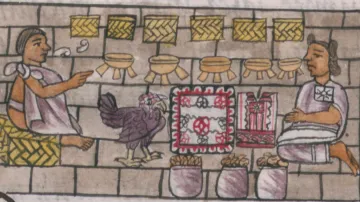
Aztec illustration of a turkey, or guajolote in Nahuatl, taken from the sixteenth-century Florentine Codex
ANIMALS AND HUMAN SOCIETY IN WORLD HISTORY
taught by Dr. Martin Welker, assistant curator of zooarchaeology and Dr. Michael M. Brescia, curator of ethnohistory
Animals and humans have lived together for millennia, at times competing for food, water, and territory, but also sustaining one another. Environments and ecologies unique to each region of the world have shaped the interaction between human and animal communities, and a series of complex relationships have evolved over time that reveal an uneasy symbiosis between the nutritional, economic, and cultural needs of humans and the multiple features of the animal kingdom. Animals have served as modes of transportation, have been used as beasts of burden to plow fields and haul heavy cargo, have carried hunters and warriors on their backs, and have provided crucial companionship inside the home. ASM zooarchaeologist Martin Welker will examine the archaeological and ecological record of human and animal co-evolution and interaction to demonstrate how human and animal communities have impacted and shaped one another. ASM ethnohistorian Michael Brescia will explore how the intersection of political economy, technologies, and culture--starting in the sixteenth century and rapidly accelerating in the early nineteenth century--radically transformed the animal-human continuum in an increasingly globalized world seeking material progress at every turn. Welker and Brescia will employ examples from around the world to illustrate these major themes, although the more detailed case studies will come primarily from the Americas, especially North America.
Session 1: Introduction – Toward an Interdisciplinary Understanding of Animal-Human Interaction Description: Many animal species have shared a multifaceted relationship with human communities through time. Historians and archaeologists seek to understand these relationships using different, but complementary methodologies that capture both the human perception of past events and the remnants of human and animal behavior. Together, these approaches provide a lens into the past that we will use to examine the complex relationships between human and animal species in the Americas. In this introductory session, we will explore the nature and scope of the historical and archaeological records and the impact of cross-cultural contact and exchange on human-animal relationships in the Americas since 1492, what scholars identify as part of the Columbian Exchange.
Session 2: “Ganado mayor, ganado menor:” Livestock, Big and Small, in North America Description: Domestic livestock were foundational to human communities ranging from the earliest agrarian communities in Eurasia to European colonies in the Americas. As important sources of food and labor, cattle were one of the first domesticates that European settlers introduced to the New World. Cattle subsequently played a key role in sustaining European settlements and supporting many colonial economies, while sheep, goats, and pigs played similar roles that transformed the ecological landscapes of the Americas, thus diminishing the traditional lands of many Indigenous communities.
Session 3: “…to give my dogs some meat:” Dogs Inside and Outside the American Home Description: The dog, widely recognized as man’s best friend, is the first species to have been domesticated and has been adapted both physically and behaviorally to an array of roles unmatched by any other animal species. The history of dogs in the Americas is complicated and involves at least three distinct colonization events, two of which precede European arrival. As one of only two domesticated animal species in North America until the arrival of Europeans, dogs filled many niches within Native American communities providing everything from fiber for textiles, transport labor, food, assistance when hunting, and companionship. Dogs also played a prominent role in European efforts to explore and conquer the Americas, which provides us with a unique opportunity to compare the trajectory of dog-human relationships in the evolution of Native America societies in the post-conquest period.
Session 4: Patterns of Animal-Human Reciprocity in the Americas, Part I: From Horses to Turkeys Description: At first glance, the Columbian Exchange seems one-sided, favoring the European conquerors and settlers at the expense of the Indigenous population. In the fourth session of our Master Class, we will examine the transformation of certain Native American communities in the wake of the horse’s “return” to North America and the introduction of a new animal—sheep—and untangle the myths and stereotypes that continue to linger in the United States surrounding the Indigenous use of horses and sheep. We also will look at how animals with origins in North America, such as the turkey and eagle, fashioned the emerging Euro-American consciousness in the Age of Enlightenment.
Session 5: Patterns of Animal-Human Reciprocity in the Americas, Part II: The Bark Between Anthropology and History Description: In the fifth and final session our Master Class, we will explore some of the conceptual challenges that historians and archaeologists face when writing about the long-term consequences of the ecological, cultural, and social disruptions that took place in the western hemisphere when European and Indigenous lifeways collided. Themes include species extinction, human health, the science of climate change, and extending “personhood” to animals. The intersection of European and Indigenous cultures in the Americas resulted in the exchange of cultural ideals and practices, while also causing undeniable environmental transformation. Animals have played a crucial role in both the cultural and ecological development of the Americas in ways that continue to color our perception of the hemisphere and the history of the peoples who have occupied it for millennia.
-----------
$80 ASM members $130 non members
Amount paid over $50 is a tax-deductible gift
Proceeds support the instructor's ongoing research
One month access to a Google Drive folder
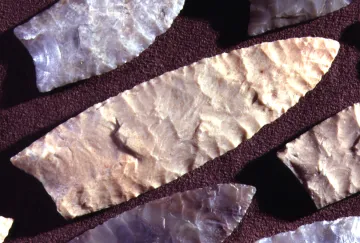
CLOVIS TO KINO: Archaeology of the Southwest Borderlands
taught by James T. Watson, Ph.D., curator of bioarchaeology and professor of anthropology
The desert Borderlands of the southwest US and northwest Mexico present a foreboding but ecologically diverse environment that supported human occupation as far back as the earliest Americans and led to the development of large precolonial civilizations characterized by some of the most complex irrigation systems in the New World. Today this area is substantially defined by the political border between Mexico and the United States. This class critically explores evidence from the archaeological record of the Borderlands to document human migrations and interactions, and behavioral and technological adaptations to thrive in this dynamic environment for centuries.
Session 1. Clovis to Cultigens
Session 2. Cultigens to the Classic Period
Session 3. Classic Period to Collapse
Session 4. Collapse to Kino
-----------
$80 ASM members $130 non members
Amount paid over $50 is a tax-deductible gift
Proceeds support the instructor's ongoing research
One month access to a Google Drive folder
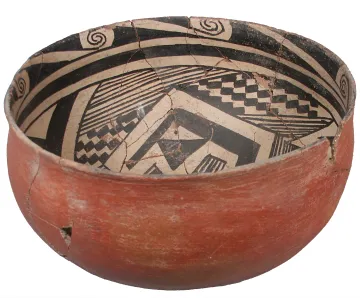
ANCIENT SOUTHWESTERN CERAMICS
taught by Patrick D. Lyons, Ph.D., RPA, ASM director, curator, and professor of anthropology
This four-part ASM Master Class focuses on painted pre-Hispanic pottery.
In the first session, we address typological conventions and nomenclature used in the US Southwest; the origin and development of ceramics in the region; pottery-making technology; and what pottery can tell us about the dating of archaeological sites, as well as ancient diets, migrations, trade, and religion.
The focus of the second session is the painted pottery of the Kayenta Region, the Hopi Mesas, and the Middle Little Colorado River Valley, including Tusayan White Ware, Little Colorado White Ware, Tsegi Orange Ware, Jeddito Orange Ware, Winslow Orange Ware, and Jeddito Yellow Ware.
In the third session, we explore the decorated ceramics of the southern Colorado Plateau in east-central Arizona and west-central New Mexico, including Cibola White Ware, White Mountain Red Ware, Zuni Glaze Ware, and Matsaki Buff Ware.
In the final session, Roosevelt Red Ware and Maverick Mountain Series pottery types, which are most common in southern Arizona and southwestern New Mexico, are discussed.
$80 ASM members $130 non members
Amount paid over $50 is a tax-deductible gift
Proceeds support the instructor's ongoing research
One month access to a Google Drive folder
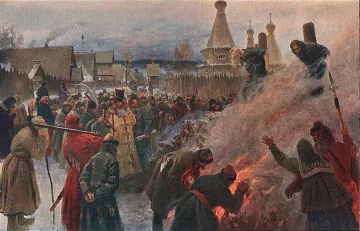
'Deus vult' - Religious and Material Dimensions of Violence agains the Established Order in Modern World History
a five-part series taught by Dr. Michael M. Brescia, curator of ethnohistory and affiliated professor of history and law
Invoking an all-powerful deity to effect radical changes in the social and political order has deep roots in world history. Efforts to restore or revitalize cultural identity and promote economic security cuts across geographical boundaries and reveals the extent to which religious understandings of material well-being intersect and conflict with established political power, economic systems, and accepted social norms. In his new Master Class, ASM historian Michael Brescia identifies case studies from world history since 1600 to illustrate how individuals, families, and communities filtered their lived experiences through a religious framework in order to make sense of changes imposed from the outside. Resistance to such changes often took the form of violence and rebellion, with a potent millenarian streak that promised its adherents economic renewal, spiritual redemption, and a new social order. He will employ case studies from different parts of the world, including North America, Russia, Asia, and the South Pacific.
Session 1 – The Apocalypse meets Mother Earth: Toward an Understanding of Resistance and Rebellion in the Modern World. In the introductory session, Dr. Brescia identifies and develops the conceptual framework that will inform our understanding of how religion and material well-being have intersected across the globe since 1600, inspiring millenarian visions of radical change and cultural revitalization.
Session 2 – The Number of the Beast in the Kingdom of Man: Social Identity, the Centralization of Power, and the Coming of the Apocalypse in Russia and Mexico. Russia and Mexico offer curious but compelling examples of internal struggles against the consolidation of political power and changes made to religious faith. The Russian monk Avvakum emerged in the mid-seventeenth century to challenge official attempts to reform the Russian Orthodox liturgy during a time of economic change and social transformation, while in the late 1890s, Teresa Urrea, a teenage healer from Sonora, Mexico, attracted local campesinos (peasants) who were unhappy with the dictatorship of Porfirio Díaz and the regional power structure put in place to implement his policies.
Session 3 – ‘The Only Thing that Indians want is to be Left Alone:’ Indigenous Rebellions across Spanish North America. Dr. Brescia provides a critical appraisal of three Native revolts against the Spanish colonial enterprise: the Tepehuán Revolt of 1616-1620 (northwestern Mexico), the Pueblo Revolt of 1680-1692 (northern New Mexico), and the Tzeltal Revolt of 1712-1713 (southern Mexico), teasing out similarities and differences in the structural and precipitating causes of these violent rebellions.
Session 4 – The Brother of Jesus comes to Qing China, while Cannibalism restores Paradise in the South Pacific. In the fourth session of our Master Class, Dr. Brescia explores an iteration of Christianity that emerged in mid-nineteenth century China, a time when the Qing (Manchu) dynasty had to deal with foreign intrusion, famine, economic decline, and natural disasters, which, taken together, fostered discontent among the rural and urban masses and led a young university-age student to identify himself as Jesus’ brother and incite a violent rebellion. Meanwhile, in the South Pacific around the same time, the Māori rallied around the Pai Maire Movement in a concerted effort to end British rule in New Zealand, which had caused severe dislocation and loss of traditional lands and natural resources.
Session 5 – Buddhism and Rebellion in Burma (Myanmar) in the Early Twentieth Century. Dr. Brescia brings our Master Class into the twentieth century and examines the impact of British colonialism and migration from India on Burma, located in southeast Asia and now called Myanmar. The rise of the Buddhist monk, Saya San, took place in tandem with the profound economic and social changes brought about by the Great Depression, and religious and cultural understandings of cyclical time informed Saya San’s call for rebellion. In the second half of this fifth and final session, Dr. Brescia will highlight the symmetries and convergences among the various revolts and rebellions discussed in the Master Class, while also acknowledging their unique historical and cultural contexts.
Image: “The Burning of Avvakum,” 1897, by Pyotr Yevgenyevich Myasoyedo
------------
$80 ASM members $130 non members
Amount paid over $50 is a tax-deductible gift
Proceeds support the instructor's ongoing research
One month access to a Google Drive folder





